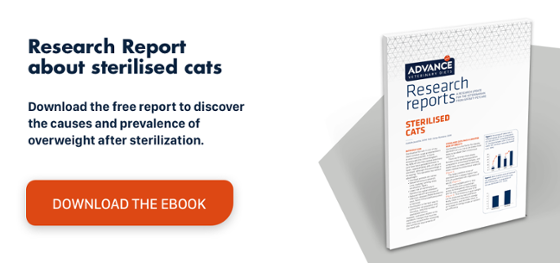Sterilisation procedure in female cats: ovariohysterectomy or ovariectomy
The sterilisation of female cats is one of the most common surgical procedures in veterinary practice, as it not only prevents unwanted litters, but it also eliminates unwanted sexual behaviours, reduces the risk of various diseases of the reproductive tract and increases life expectancy.
Two different techniques are used to sterilise female cats: ovariohysterectomy(OVH) and ovariectomy (OVE). Both require similar surgical techniques, but in OVE the incisions in the skin and fascia are considerably smaller and more localised. In the case of OVH, the blood vessels leading to the ovary and uterus are ligated, and the uterus is also removed.
In some countries, such as the United States and Canada, there is a strong preference for OVH, while vets in some European countries prefer to perform an OVE. This is probably due to advantages such as a smaller incision and less surgical manipulation, which probably translates into fewer intra- and postoperative complications.
Comparison of ovariohysterectomy and ovariectomy in female cats
A study published in the Journal of the American Veterinary Medical Association1 concluded that there is no scientific evidence as of yet to indicate that removing both the ovaries and uterus is better than the ovaries alone. They also highlighted that ovariectomy is as effective a sterilisation technique as ovariohysterectomy, it has no disadvantages and may reduce the complications resulting from uterine manipulation.
Indeed, another analysis by Bentley2 reported that the technical complications of OVE and OVH are quite similar. Regarding their long-term effects, both procedures are considered effective in preventing pyometra and uterine cancer in female cats because they are hormone-mediated diseases. Both techniques imply a similar risk of urinary incontinence due to the absence of oestrogen.
A recent and comprehensive study carried out by Pereira et al. at the University of Sao Paulo3 reached fairly similar conclusions. The authors assessed postoperative pain and short-term complications in female cats subjected to an OVH or OVE. They conducted a randomized, blinded, prospective study in 20 female cats, half of which underwent an OVH and the other half an OVE.
They assessed pain levels before surgery and 1, 2, 4, 8, 12 and 24 hours after the procedure using pain and sedation scales, physiological parameters and blood glucose levels. They also evaluated any early- and late-onset postoperative complications at 7 and 10 days.
The work by Pereira et al. found that changes in cardiovascular parameters were not clinically relevant, but female cats that underwent OVH had increased heart rates over baseline values for the first hour. This group also had a higher blood glucose level compared with baseline and with the group that underwent OVE.
As expected, the surgical time was longer for OVH, although there were no significant differences in pain scores between the groups. However, there was a greater need for rescue analgesia in cats undergoing OVH compared to OVE. None of the subjects presented perioperative complications or on days 7 and 10.
As such, the authors concluded that, “Both surgical techniques promoted similar intensity of postoperative pain in cats and there were no short-term complications throughout the study’s evaluation period.”, so either technique can be used for surgical sterilisation, depending on the surgeon’s preference and experience. Nevertheless, it is important to bear in mind that cats undergoing OVE did not require rescue analgesia and the surgical time is shorter.

